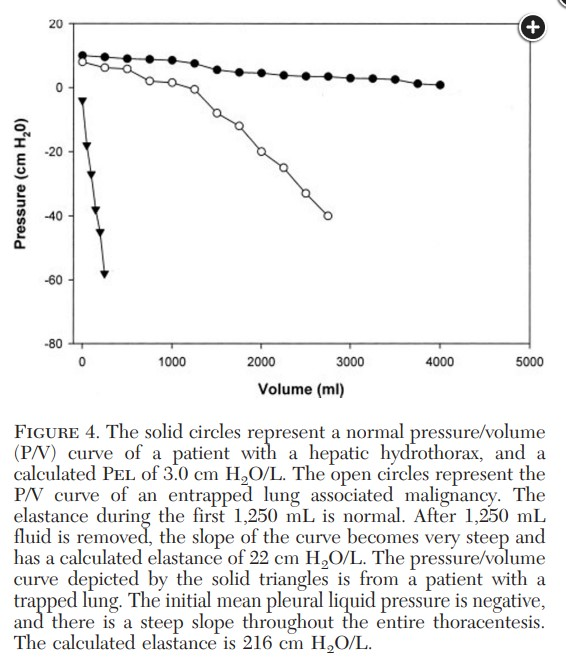trapped lung physiology is result of chronic lung entrapment
- related: pleural effusion
- tags: #permanent #pulmonology
Acutely with infection or effusion, lungs can be entrapped. The effusion is usually exudative. If it is not resolved, this can leads to trapped lung, which is a chronic finding. With trapped lung, the inflammation has resolved, but there is scarring along pleural surface causing un-expandable lung. The effusion now becomes transudative. In both cases, the lungs are unexpandable.

A normal lung subjected to pleural fluid (eg, hepatic hydrothorax) has a fairly flat elastance curve with pleural pressures staying at or higher than 0 cm H2O (atmospheric pressure). A trapped lung typically begins with a pressure that is negative and rapidly falls further with attempts to remove fluid. This is often accompanied by patient pain. The lung entrapment elastance curve is typically in between and often reveals an inflection point where the lung has expanded as much as it can in response to fluid removal.1